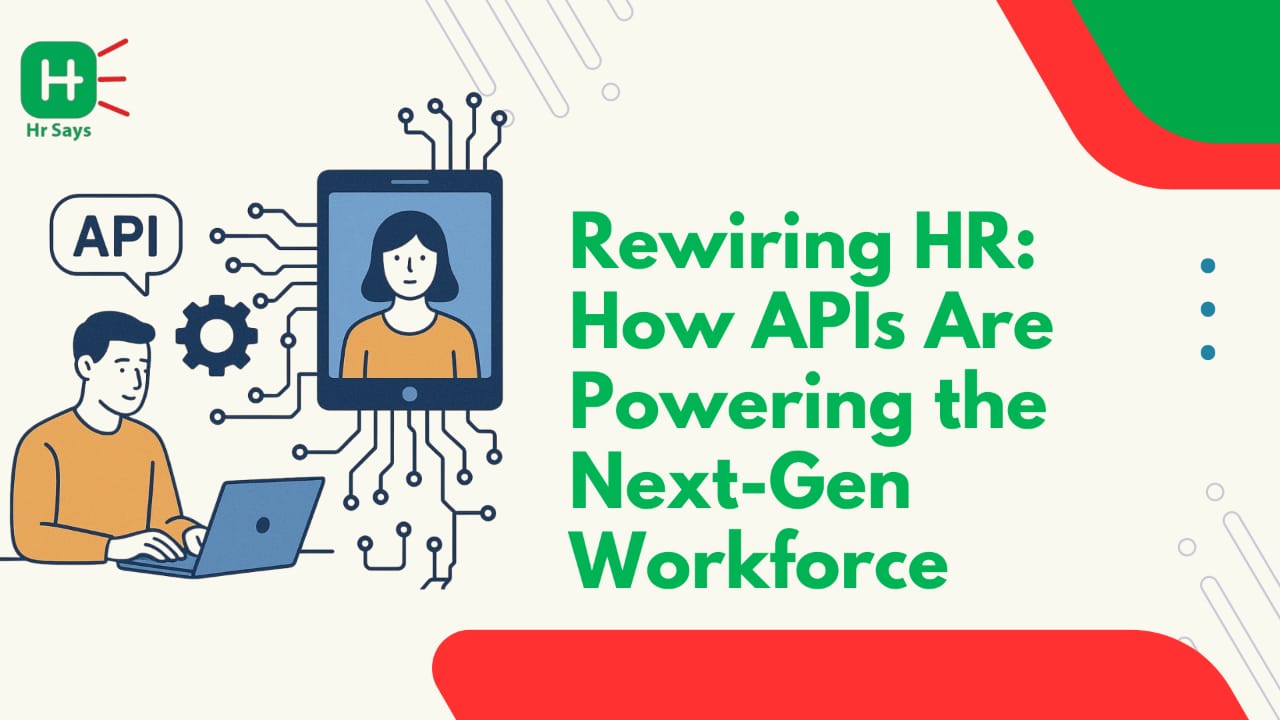What if HR systems could think less like monoliths and more like plug-and-play engines? Today’s workforce demands flexibility—and HR must evolve to meet it. This blog explores how API-driven HR is quietly transforming back-end workflows into modular, agile powerhouses.
The Shift From Systems to Services
HR software used to come bundled, bloated, and boxed in. But times have changed.
Now, instead of building full systems from scratch or buying massive suites, companies are connecting smaller tools—through APIs. These APIs act as invisible connectors, making information travel faster and processes feel seamless.
This shift allows teams to:
● Integrate new HR tools without overhauling old systems
● Replace or upgrade functions without disrupting the whole ecosystem
● Choose best-in-class solutions over bundled compromises
APIs don’t just simplify things—they break down barriers.
What Is Modular HR?
The concept of modular HR is exactly what it sounds like: HR processes broken into interchangeable, customizable blocks.
Think of it like LEGO pieces—each one designed for a task. Need onboarding? Plug in a service. Want to automate leave approvals? Connect another.
Some key examples of modular components:
● Payroll APIs that work with your accounting software
● Attendance APIs that sync with mobile devices
● Recruitment APIs that pull data directly from job boards
Each piece can be swapped or updated as your needs change. You’re never locked in.
Why HR Leaders Are Paying Attention
Not every HR leader speaks the language of code. But modularity brings benefits even non-tech professionals can’t ignore.
These include:
● Faster deployment of new HR solutions
● Better employee experience through smoother interactions
● Reduced costs by avoiding large system replacements
● Flexibility to adapt as workforce needs shift
In short, modular HR offers freedom—from outdated systems and from IT bottlenecks.
Real-Time Syncing = Real-Time Decisions
Speed matters in HR. With APIs, delays shrink and data syncs across platforms instantly.
Instead of waiting hours for a payroll file to be processed, salary changes reflect instantly across systems. Employee feedback tools push results to engagement dashboards live.
This helps HR leaders:
● React to workforce trends in real time
● Spot compliance risks early
● Track productivity without lag
Every click becomes a data point. Every module, a live wire.
Challenges to Keep in Mind
Of course, it’s not all plug-and-play magic.
Some things to consider:
● Security must be airtight. APIs create more access points.
● Vendor compatibility is crucial. Not every platform plays nice.
● Data consistency needs constant monitoring when systems multiply.
A modular approach requires planning and a long-term vision. It’s a marathon—not a sprint.
The Future Is Interoperable
Traditional HR systems can no longer support the pace of modern work. As workforce structures shift, hybrid becomes default, and skills change faster than org charts—modular HR is gaining ground.
And behind the scenes, APIs are quietly doing the heavy lifting.
It's not just a tech upgrade. It's an operational reset.

 As organizations pivot to more flexible work models, modular HR powered by APIs is gaining traction. This blog unpacks how API-driven workflows offer speed, agility, and customization for the HR teams of tomorrow.
As organizations pivot to more flexible work models, modular HR powered by APIs is gaining traction. This blog unpacks how API-driven workflows offer speed, agility, and customization for the HR teams of tomorrow.












.jpeg)












.jpeg)